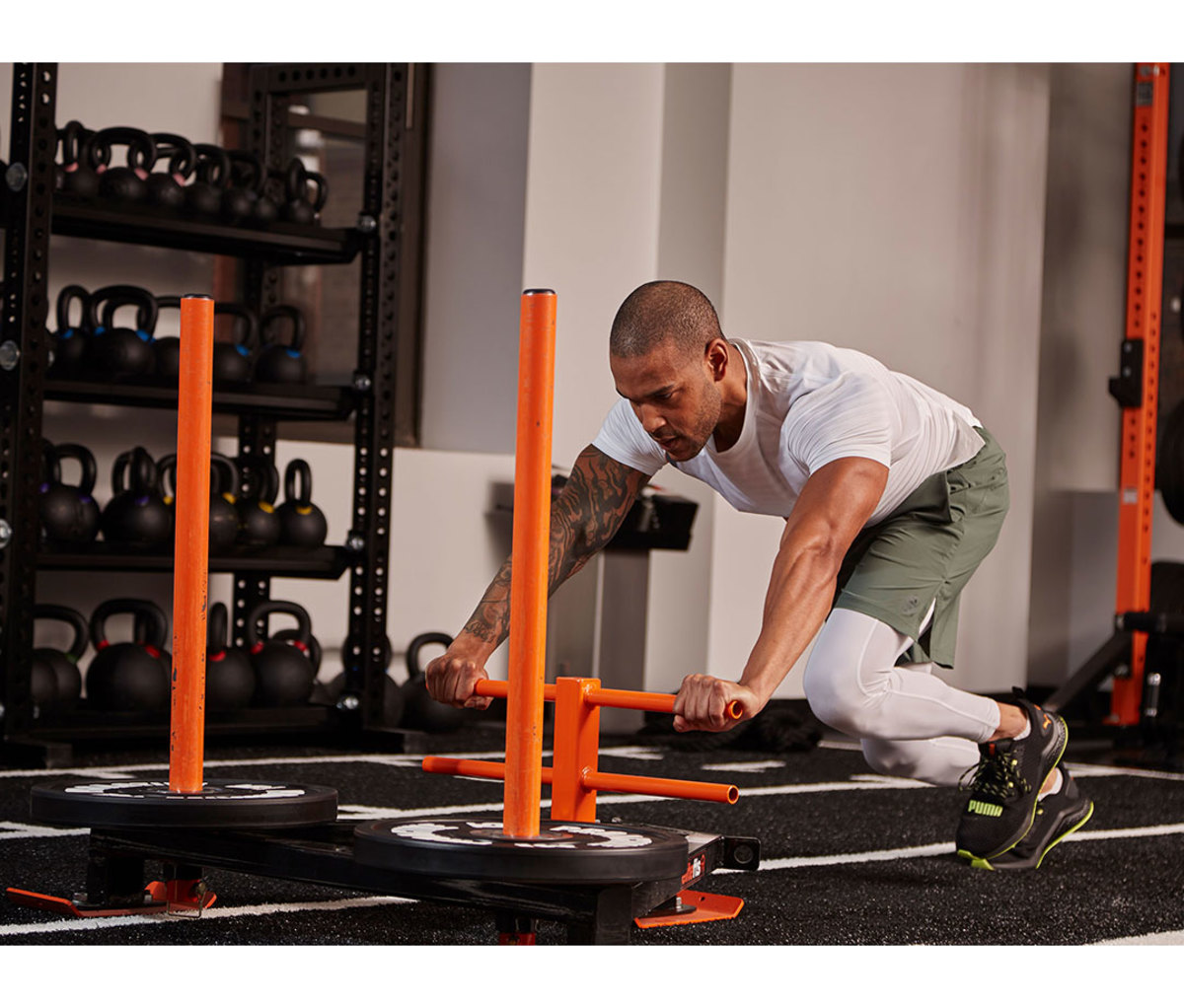Sleds, also known as prowlers, have become emblematic of football training, because they’re used to replicate the effort of pushing an object that doesn’t want to budge (like an offensive lineman). But more gyms are starting to offer them—typically if there’s a turf area.
“Not many training methods can challenge your power, strength, and endurance all at once quite as well as the sled,” says Patrick Jones, a strength coach at Performance Lab by the Wright Fit in NYC.
Sleds are foremost a lower-body test. First, the glutes engage to get the contraption moving, then the quads and hamstrings activate to maintain momentum. The core fires throughout, protecting the spine and helping to transfer force to the sled. “The pushing position used to drive the sled is the same that’s needed for power sports, like running or soccer,” Jones says. Better yet: Hand straps, a TRX, a harness, or a light battle rope turns it into a full-body workout tool.
We headed to the Wright Fit to find out just how it’s done. If you’re new to the sled, start light and focus on body position—particularly maintaining a neutral spine—and build the weight gradually; the sled is a self-limiting tool, so should you load it up too much, the thing won’t move.
The Workout
Pick 4 to 6 exercises and do 3 to 4 sets of each, resting as needed. Finish all sets before progressing; rest 1 minute between moves. Sled moves can also be used as a finisher on a lifting day.

1. Sled Push—High and Low
Start with hands on the high poles or the low crossbar, hips hinged forward slightly. (It should feel like bracing to push a broken-down car along the street.) With back straight and core engaged, drive through balls of feet and push the sled with small, quick steps. Do a high push one direction and low push back; 40 seconds equals 1 set.
from Men's Journal https://ift.tt/2Y8uJii
via IFTTT








0 comments:
Post a Comment